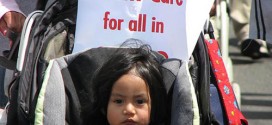By Vania Cao
The socioeconomic characteristics and health status of Asian Americans and Pacific Islanders (AAPIs) can vary greatly by ethnic or racial subgroups. AAPIs represent over 30 countries and communicate with over a hundred different dialects or languages, yet due to the small size of the AAPI demographic as a percentage of the entire US population, AAPIs have historically been categorized as “other” or simply “Asian” on research surveys. Luckily, finer data categorization is now among the important steps that the government is taking to advance health care within the AAPI population.
In October of 2009, President Obama signed an Executive Order which reinstated the White House Initiative on Asian Americans and Pacific Islanders, a concerted effort across federal agencies to specifically address issues of concern within these populations. This initiative involves senior officials from over 20 different government agencies and departments, including the Department of Health and Human Services. Today, the HHS, and many other agencies within the White House Initiative are actively working on new ways to get more accurate information about health issues within the AAPI population, and to implement new strategies to address the issues that are uncovered.

“[Disaggregated] data collection is very important…in identifying and developing effective interventions to address [health disparities],” said Dr. J. Nadine Gracia, Deputy Assistant Secretary for Minority Health, and the Director of the Office of Minority Health at the U.S. Department of Health and Human Services (HHS). Her office oversees the implementation of the HHS Action Plan to Reduce Racial and Ethnic Health Disparities and the National Partnership for Action to End Heath Disparities. “For example, in Vietnamese, Cambodian and Samoan women, you see some of the highest rates of cervical cancer. If you look at the rates of the uninsured, Korean Americans have the highest rate among Asian Americans. Having this type of disaggregated data helps us better identify disparities, particularly when they occur within a particular population.”
In October 2011, HHS published its final standards for data collection on race, ethnicity, sex, primary language and disability status, which are now used in all of their national health surveys. “These standards expand upon the [old] race and ethnicity categorizations,” said Dr. Gracia. “It adds additional granularity and subpopulations.” Whereas the AAPI race categorizations once were limited to “Asian,” or “Native Hawaiian/Other Pacific Islander”, there are now many additional categories (Asian-Indian, Chinese, Filipino, Japanese, Korean, Vietnamese, and Other Asian; Native Hawaiian, Guamanian/Chamorro, Samoan, Other Pacific Islander).
This fine-tuning of data collection using traditional national health surveys is but one method the government is employing to better grasp and advance the health status of AAPIs. Modern technology has been valuable in efforts to reach out and communicate about health care issues, particularly with those who have limited English proficiency. This past August, the White House Initiative on AAPIs, along with Dr. Howard Koh, Assistant Secretary for Health for the HHS, hosted a Google Hangout group videochat in Korean to inform members of the AAPI community about the new health insurance marketplace that will be available under the Affordable Care Act. These types of events, tailored to specific subpopulations, allow agencies to “perform outreach and education in a culturally and linguistically appropriate manner,” said Gracia. “There will be additional Hangouts in Vietnamese and Chinese as well.” Other social media tools such as blogs and Twitter are already being implemented alongside in-person outreach events to more accurately gain and disseminate information from and to the relevant populations.
“Our department and others have been working on the issue of language access,” Gracia said. The Office of Minority Health released a language access plan in February of this year, to give members of the AAPI community who require language assistance meaningful access to HHS programs and activities.
A part of this effort is in response to the data that show us that for the AAPI community, limited English proficiency, language barriers and cultural barriers are significant when it comes to accessing health care, as well as the quality of care that is received.”
Despite the changes that have already taken place in the last few years to advance health equity within the AAPI community, Gracia knows there is more to be done to tackle the barriers that remain. Small populations of AAPI subgroups means small sample sizes from surveys, making reliable health status estimates difficult to determine. Cultural and language barriers also exacerbate trust issues when collecting self-reported health data. “These challenges we can address by, for example, oversampling the population or pooling the data across more than one year, so that we can have a sufficient sample size,” Gracia said, “as well as efforts to train interviewers in cultural and linguistic competency, the use of interpreters, and partnering with community organizations that are well known and trusted in the community.”
Oversampling, or taking a larger sample of the specific population than normally warranted based on its national population percentile, is expected to yield valuable health data in the coming years. In the still-ongoing 2011-2014 cycle of the Centers for Disease Control (CDC) Health and Nutrition Examination Survey, Asian Americans are being oversampled for the first time in order to obtain more information on their health and nutrition status, such as prevalence estimates of chronic health conditions including hypertention, tuberculosis and diabetes.
To specifically counter the effects of cultural barriers to adequate health care access, HHS has created a suite of guidelines and tools specifically catered to providing culturally competent health care access within local communities and government facilities. These can be found at www.thinkculturalhealth.hhs.gov. As the American population continues to grow in diversity of nationalities and languages, this flagship initiative from the Office of Minority Health Center for Linguistic and Cultural Competence in Health Care is an important step towards addressing health inequities in all disadvantaged groups.
 Asian Fortune Your source for all things Asian American
Asian Fortune Your source for all things Asian American



